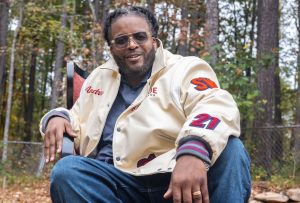Their histories, accurate and complete, are lost to time and buried with them and those who knew them. I wish I knew more for their stories would read like a page-turning novel.
The moonshining trio of Raymond Parks, Lloyd Seay and Roy Hall burst out of the north Georgia mountains from Dawson County in the 1930s to combine Seay’s and Hall’s driving skills with Parks’ business ingenuity to participate in a new sport that would become known as NASCAR.
Hall was storybook handsome and dashing while Seay was such a pure, speeding talent that Bill France, founder of NASCAR, said in the 1980s, “Dale Earnhardt is the best driver I’ve seen since Lloyd Seay. Lloyd was the best.”
Seay became what the South loves best – a folk hero of tragic proportions. As the years have come and go, his legend has grown but the historical facts have mostly fallen away. Stories conflict and major pieces are missing.
And, really, when you think about it, it shouldn’t be hard to know everything since his life was cut short by a malicious bullet to the heart just a couple of months short of his 22nd birthday. He was shot dead by his cousin, Woodrow Anderson, over bags of sugar that were used to make moonshine.
Here’s what we know and what people mostly agree upon: Seay, as a teenager, began a successful life of whiskey tripping over the curvy mountain roads to Atlanta. He was caught on the few occasions when the law managed to shoot out his tires.
Along with his cousins Parks and Hall, he blazed the first trails of stock car racing. On Sept. 1, 1941, he won the sport’s championship at Atlanta’s Lakewood Speedway. He toted home the trophy plus the purse of $450. Within an hour of awaking the next morning, he died minutes after the shot, his blood turning the Georgia clay into a deeper shade of red.
A few months ago, a friend, Larry Odom, offered a copy of the transcript of the murder trial and, excitedly, I took it. I thought it would be the law and gospel of what happened on that fateful day but it was not.
There were two eyewitnesses to the shooting. Anderson who pulled the trigger and Seay’s brother, Jim, who was shot in the neck by Anderson. Their accounts differed as much as day differs from night. They agreed only on this: Lloyd Seay was dead, killed by a bullet from Anderson’s gun.
Anderson’s testimony was so perfectly detailed beginning from the moment he arrived at Jim Seay’s house where he claimed to have shaken Lloyd awake and told him to get up so they could settle the accounting on a recent run of ‘shine that the prosecutor finally recited the children’s poem, ‘Mary Had A Little Lamb’ and asked him to repeat it since his memory was perfect. Anderson couldn’t. But, the attorney argued, Anderson had perfect recall.
“I didn’t see Mary had a little lamb,” Anderson growled. “I seen what happened to Lloyd.”
Anderson contended that the Seay brothers had jumped on him and he ran to get the gun and shoot them. Seay testified that they were in the car when suddenly Anderson started shooting them. Anderson said they carried Lloyd into the house where he died while Seay said he died on the ground where he had fallen.
There is dispute over his last words. Anderson claimed he said, “Woodrow, I’m sorry for what I did.”
Jim recalled him saying, “Woodrow, why’d you do it?”
Here’s a fact that history has not forgotten for it is entered into the Georgia state records: Woodrow Anderson was found guilty and sentenced to life in prison.
Seay, whose grave is marked with a fancy monument that has his car and photo on it, became a folk hero.
Nothing can kill the legend of Lloyd Seay.
[Ronda Rich is the best-selling author of “There’s a Better Day A-Comin’.” Visit www.rondarich.com to sign up for her free weekly newsletter.]












Leave a Comment
You must be logged in to post a comment.